This iconic item has an amazing history. It is customary to start its countdown with the 1920s and Coco Chanel, but we will look into earlier times. After all, firstly, Mademoiselle Coco did not create the first black dress - it existed before. And, secondly, it is important to remember the basic principles by which a women's wardrobe was formed back in the 19th century.
In the 19th century, a proper women's wardrobe had to include a variety of outfits for all occasions. Morning, walking, afternoon, for balls, concerts, theaters, home and official receptions. And the rules of etiquette strictly determined what was appropriate to wear in which cases. However, not all girls could afford to have so many dresses. And this is where black outfits came to the rescue.
Black fabrics saved women who earned their living on their own. They were housekeepers, governesses, milliners, seamstresses, shopkeepers and many others. The heroines of many paintings by French Impressionists are depicted in black dresses - modest, poor girls who wanted to look fashionable, but could not afford it. Perhaps the most striking illustrations of this phenomenon are the paintings of Pierre Auguste Renoir "Umbrellas" and "Girls in Black".

In addition, black dresses were often worn by female students, appreciating their practicality and versatility. Amazons – costumes for horseback riding – were black. Also, black dresses were often chosen by older ladies.
As an example, we can recall Jane Eyre from the novel of the same name by Charlotte Brontë: she arrived at the estate, to work as a governess, with three dresses. Gray - for the most solemn occasions, and two everyday black - silk and wool. Thus, gradually, the black color penetrated women's fashion and became entrenched in it. It ceased to be exclusively mourning and began to be perceived as an elegant predecessor of the little black dress.
An unusual and bold concept of versatility began to take shape and gain popularity. There were claims that you can have only one black dress, changing its decor and accessories, depending on the circumstances.
One fashion magazine wrote back in 1883: “Nowadays, a black velvet dress is as indispensable a part of every woman’s wardrobe as a black cashmere one; it is a reserve battalion to be had for any unforeseen event. If you have a black velvet dress in your box, you can be sure that no unexpected invitation will put you in a difficult position regarding your toilet.”
It should not be forgotten that black continued to be considered mourning. And even contemporaries could not always distinguish a mourning black dress from a restrained everyday one. However, most often, mourning outfits were modest, completely closed, without decor and made of matte fabrics without a sheen: crepe, wool, etc.
But Anna Karenina, at the memorial ball, had a black dress that did not resemble a mourning dress. It had a deep neckline, bare shoulders, and white lace (which the costume designers of all the films forgot about).
"Anna was not in lilac, as Kitty had certainly wanted, but in a black, low-cut velvet dress that revealed her chiseled [...] shoulders and chest. The entire dress was trimmed with Venetian guipure. On her head, in her black hair, there was a small garland of pansies and the same on the black ribbon of her belt between the white lace. [...] On her elegant, strong neck was a string of pearls."
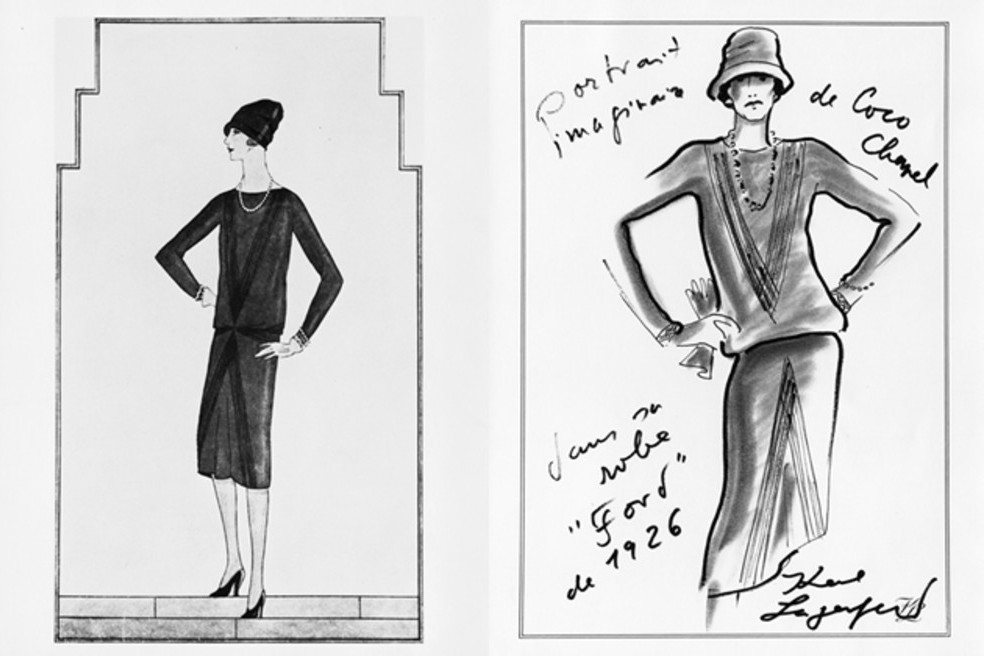
Thus, by the turn of the 19th and 20th centuries, even the evening dresses of young girls could be black, which was not accepted before.
In general, even before Coco Chanel, the black dress became a universal outfit and was not perceived exclusively as mourning. This concept was also strongly strengthened by the First World War. Women's costumes were greatly simplified and got rid of all the complex and "superfluous" elements that hindered movement. Women of high social status worked at the front and in the rear, including. But after the war there was no return to the previous measured way of life. New ideals of beauty emerged, a new emancipated image of a woman, and dresses continued to change.
Naturally, black dresses also found their place. In 1919, Emily Post, one of the most authoritative etiquette experts of the time, wrote that “it is very tiring to wear black all the time, but no other color is so comfortable and universal, and looks appropriate on every occasion.”
In 1922, the “la garçon” style dress was introduced, named after a popular novel of the time. The sleek silhouette of the Roaring Twenties was designed for slender, boyish girls. The new dress was as simple as possible: made of black satin with a white collar and cuffs.
In 1925, a year before Chanel, Jeanne Lanvin's fashion house created a modest dress made of black satin, without any decoration. And the phrase "little black dress" was already appearing in literature and the press at that time.
In general, Coco Chanel did not invent either the dress or the concept. But it was she who made the little black dress incredibly popular. Mademoiselle Coco herself later said: “Looking at the colorful crowd, I realized: too much color. Something else is needed. Only a black dress would look truly elegant.”

On October 1, 1926, Vogue published a sketch of a very simple black dress by Chanel, accessorized with small pearl necklaces. The first version was made of woolen knitwear. However, realizing the potential of its popularity, Coco Chanel released other versions - in crepe with long sleeves, in thin cotton fabric without sleeves, in satin and with double skirts.
Vogue called the outfit “Ford by Chanel,” a reference to Henry Ford’s Model T automobile. “A car can be any color as long as it’s black,” he said. The new black dresses were, according to the magazine, “a uniform for modern women” and “the dresses everyone wants to wear.”
Chanel was a brilliant stylist. As she recalled, this outfit was considered "an excellent basis for any time of day and any situation. White collars and cuffs made it strict and businesslike, jewelry - elegant, and a luxurious necklace - evening. The dress itself was practically invisible, it only emphasized the woman's figure and the beauty of her skin." The dress became the background, not the basis of the image. And although the Chanel dress appeared not as an attempt to save, but as an attempt to achieve the ideal of elegance, it contributed to savings. And Mademoiselle Coco said, "thanks to me, poor girls can walk around like millionaires."

The little black dress received another round of popularity and confirmation of its status as an "eternal classic" in 1961, after the release of the film "Breakfast at Tiffany's" with the charming Audrey Hepburn. The dress for the filming was created by the Givenchy Fashion House. Today, there are three official copies of the original dress in the world. One is stored in the Givenchy archives, the other is exhibited at the Costume Museum in Madrid, and the third was sold in 2006 at a Christie's auction for 607 thousand euros, breaking the record for the cost of prop outfits.

Today, black dresses are still on the fashion agenda, as their advantages remain the same as 100 years ago. The little black dress makes the figure slimmer, easily transforms a daytime look into an evening one, and is also the perfect backdrop for experiments with accessories and makeup.

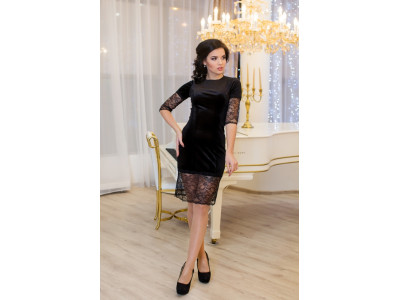

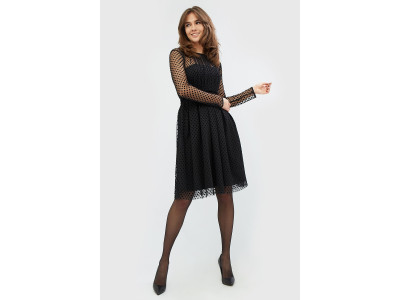
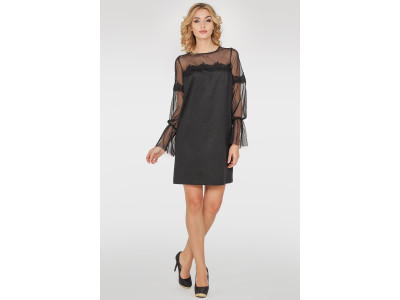
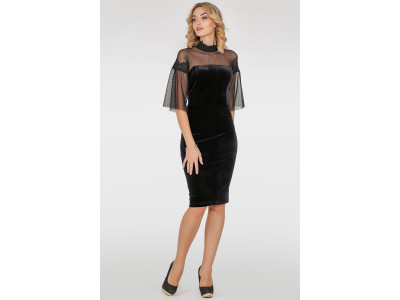

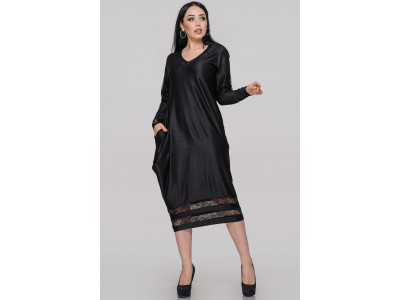

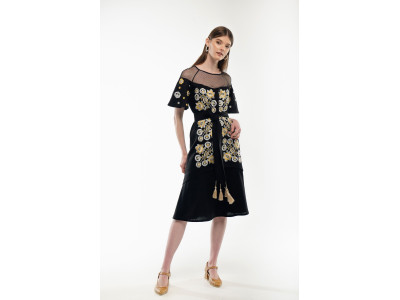
Write a comment